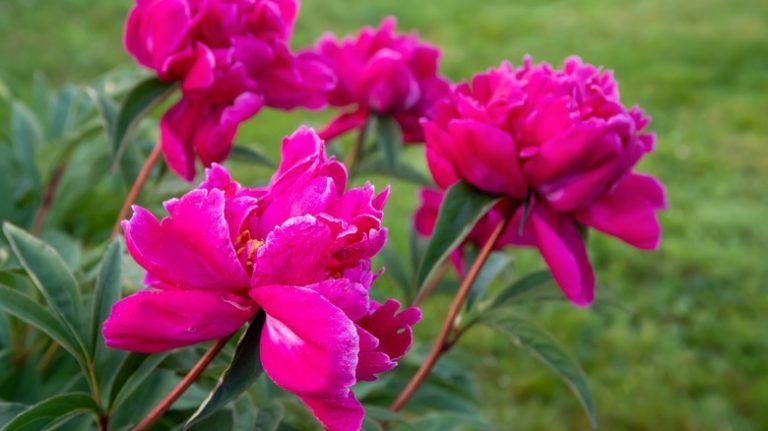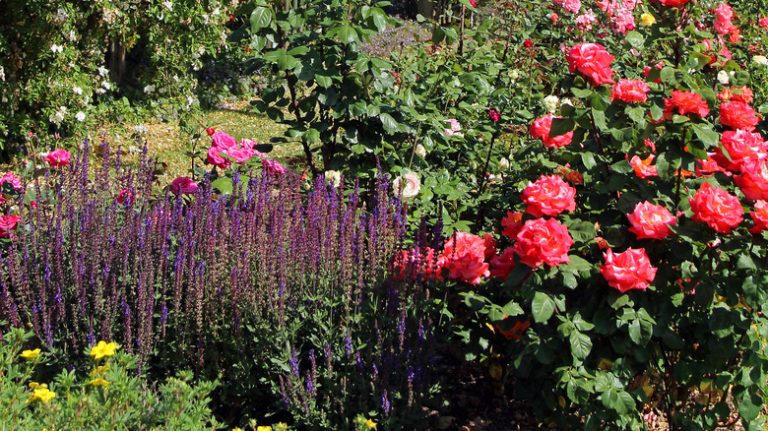Outdoor calla lilies (Zantedeschia) are popular and easy-to-grow plants that add a touch of elegance to any garden or landscape. These semi-evergreen plants, also known as arum lilies, are native to South Africa and are valued for their long-lasting, stunning blooms and lush green foliage. Whether you’re a beginner or an experienced gardener, caring for outdoor calla lilies is a breeze.
When it comes to planting calla lilies, choose a sunny location with well-draining soil. These plants thrive in full sun or part shade but may require some protection from midday heat in hotter regions. The ideal soil for calla lilies is rich in organic matter and should be kept consistently moist but not soggy. Be sure to water regularly, especially during the growing season, and adjust the frequency depending on weather conditions and the moisture needs of your specific calla lily variety.
Outdoor calla lilies are easy to grow and require minimal maintenance. Fertilize the plants monthly during the growing season with a balanced plant food to promote healthy foliage and abundant flowering. Remove any dead or damaged leaves to encourage new shoots and keep the plants looking neat. Deadheading the spent flowers can also prolong the blooming period.
One of the great characteristics of outdoor calla lilies is their versatility. They can be planted directly in the ground or grown in pots and containers. These plants make excellent additions to flower borders, garden beds, or as focal points in container arrangements. With a wide range of colors available, including white, pink, red, yellow, and even orange, calla lilies are winners in any garden or floral display.
Outdoor calla lilies are cold hardy in zones 8-11, but they can be grown as annuals or dug up and stored indoors during the winter in colder regions. If you choose to store your calla lily bulbs, remember to clean them and let them dry thoroughly before placing them in a cool, dry location for the winter. It’s also important to note that calla lilies are known to be invasive in some areas, so it’s best to check with your local gardening center or cooperative extension office to ensure they are safe to plant in your region.
Caring for outdoor calla lilies is easy and rewarding. These beautiful plants bring a touch of elegance and charm to any garden or landscape. With their long-lasting, vibrant blooms and lush foliage, they are sure to be a centerpiece of your outdoor space. So why wait? Plan ahead, choose your favorite colors, and start growing calla lilies to enjoy their beauty year after year.
All About Calla Lilies
Calla lilies are often sought after by gardeners for their beautiful and long-lasting flowers. These flowers come in a wide range of colors and are known for their elegant and upright design. Calla lilies, also known as Zantedeschia, can be grown both outdoors and indoors, making them a popular choice for flower arrangements and bouquets.
When buying calla lilies, it is important to choose healthy plants. Look for firm, green leaves and avoid any signs of disease or damage. Calla lilies prefer well-drained soils and should be planted in a sunny location where they can receive at least six hours of direct sunlight every day.
Planting calla lilies is relatively easy. They can be planted in the spring after the danger of frost has passed, or in the fall before the first frost. Calla lilies should be planted about 4 to 6 inches deep and spaced 12 to 18 inches apart. Water the plants regularly, but be careful not to overwater as this can lead to rot.
Calla lilies can tolerate a wide range of temperatures, but they prefer temperatures between 60 and 75 degrees Fahrenheit (15-24 degrees Celsius). In colder climates, calla lilies can be brought indoors for the winter and stored in a cool, dry place. During the winter, the plants will go dormant and can be pruned back to about 2 inches above the ground.
Calla lilies are relatively low-maintenance plants. They don’t require much fertilizer, but a slow-release fertilizer can be applied in the spring to promote healthy growth. If you notice any signs of diseases or pests, such as rot or spider mites, treat the plants accordingly.
One of the characteristic features of calla lilies is their long-lasting flowers. These flowers can stay in bloom for several weeks, making them a popular choice for floral arrangements. Calla lilies can also be cut and placed in a vase to enjoy indoors.
For gardeners who are planning to grow calla lilies in bogs or wet areas, it is important to ensure proper drainage and avoid waterlogged conditions. Calla lilies can tolerate moist soils, but they will not thrive in waterlogged conditions.
In summary, calla lilies are beautiful and versatile plants that can be grown both indoors and outdoors. With proper care and attention, they can provide stunning flowers and bring a touch of elegance to any garden or floral arrangement.
By Joe Cardillo
Your Guide to Planning Planting and Growing Calla Lilies
Calla lilies are beautiful flowers that can add a touch of elegance and sophistication to any outdoor space. If you’re interested in growing calla lilies in your garden, this guide will provide you with all the information you need to know for a successful and rewarding experience.
When planning to grow calla lilies, it’s important to consider the care and maintenance they require. Calla lilies are relatively low-maintenance plants, making them a great choice for both experienced gardeners and beginners alike. These flowers are known for their vibrant colors and trumpet-shaped blooms, making them popular for floral arrangements.
Your first step in caring for calla lilies is choosing the right location. Calla lilies prefer full sun to part shade exposure, so choose a spot in your garden that receives at least 6-8 hours of sunlight per day. They also prefer well-drained soils, so make sure the area you choose has good drainage.
When it comes to planting calla lilies, you can start by buying pre-grown plants or you can plant them from bulbs. If you choose to plant from bulbs, make sure to soak them in water for a few hours before planting. Dig a hole that’s about 2-4 inches deep and place the bulb in the hole with the pointy end facing up. Space the bulbs about 12-18 inches apart to give them room to grow.
After planting, water your calla lilies thoroughly. They prefer consistently moist soil, so make sure to water them regularly. However, be mindful not to overwater them as this can lead to root rot. During the growing season, you can also use liquid fertilizer once every two weeks to promote healthy growth and better flowering.
As your calla lilies grow, it’s important to continue caring for them. Remove any dead or yellowing leaves to keep the plants looking their best. If you live in a colder climate, you can store the bulbs over winter by digging them up and storing them in a cool, dry place.
Calla lilies are also great for creating stunning floral arrangements. With their long-lasting blooms and elegant appearance, they can be used in a variety of design ideas. From bouquets to centerpieces, calla lilies are a popular choice for any occasion.
When it comes to calla lily varieties, there are many different colors and hybrids to choose from. From classic white and yellow calla lilies to more vibrant shades like pink and purple, there’s a calla lily for every taste and style.
In conclusion, calla lilies are a beautiful addition to any outdoor space. With a little planning and care, you can enjoy their stunning blooms year after year. Whether you’re using them in floral arrangements or simply planting them as a groundcover, calla lilies are sure to bring beauty and elegance to your garden.
Start with a Better Plant
When it comes to outdoor Calla Lily care, it’s important to start with a better plant. Groundcovers, commonly known as Calla Lilies, are a popular choice for outdoor gardens. With their bright and long-lasting blooms, they can add a splash of color to any landscape. But not all Calla Lilies are created equal, so make sure to choose a plant that is healthy and well-established.
When selecting a Calla Lily plant, look for one that has plenty of thick, fleshy leaves. This is a good indicator that the plant is well-nourished and ready to thrive in your garden. Avoid plants that have yellowing or drooping leaves, as this may be a sign of poor health.
Before planting your Calla Lily, prepare the ground by amending the soil with organic matter and other nutrients. Calla Lilies prefer well-drained soil, so make sure to incorporate plenty of compost or other organic amendments to improve the drainage. They also thrive in sunny locations with at least six hours of direct sunlight per day.
In colder climates, Calla Lilies are often grown as annuals and need to be brought indoors or protected during the winter months. In frost-free zones (8-13), they can be left in the ground year-round. If you live in a colder climate, dig up the Calla Lily bulbs before the first frost and store them in a cool, dry place over the winter. Then, in the spring, you can plant them again to enjoy another season of beautiful blooms.
Outdoor Calla Lilies require regular watering, especially during the warmer months. Keep the soil consistently moist, but not soggy, to promote healthy growth. Watering once a week is usually sufficient, but adjust the frequency based on your climate and the moisture level of the soil.
When caring for outdoor Calla Lilies, it’s important to keep an eye out for invasive growth. Calla Lilies can spread quickly and crowd out other plants, so make sure to remove any unwanted shoots or rhizomes that are growing where they shouldn’t be. Regularly dividing the bulbs every few years can also help control their spread.
Calla Lilies make a lovely addition to floral arrangements, both indoors and out. Cut the flowers when they are fully open and place them in a vase with fresh water. Change the water every few days to keep the blooms looking their best. You can also air-dry the flowers to use in dried floral arrangements.
In conclusion, starting with a better plant is key to successful outdoor Calla Lily care. Choose a healthy and well-established plant, prepare the soil with organic amendments, and provide adequate watering and care throughout the growing season. With a little attention, your Calla Lilies will reward you with beautiful blooms year after year.
Plan for Success
When it comes to caring for outdoor Calla Lilies, a well-thought-out plan is the key to success. Here are some tips and advice on how to care for these beautiful plants:
- Begin by choosing a good location for planting. Calla Lilies prefer a spot with full sun or partial shade.
- Make sure the soil is well-draining and rich in organic matter. Calla Lilies are not particularly picky about soil type, but they will do better in fertile soils.
- If you are planting bulbs, start by digging holes that are about 4-6 inches deep. Space the bulbs 8-13 inches apart, depending on the variety.
- After planting, water the bulbs thoroughly to help them establish roots.
- Once the plants start to grow, keep the soil moist but not waterlogged. Calla Lilies prefer evenly moist soil.
- During the growing season, you can feed the plants with a balanced fertilizer every 2-3 weeks to promote healthy growth and flowering.
- Calla Lilies may need staking to support their long stems and prevent them from flopping over. Use garden stakes or bamboo poles for support.
- Protect the plants from pests and diseases. Watch out for aphids, slugs, and snails. If necessary, use organic or chemical pest control methods to keep them at bay.
- After the first frost in winter, when the foliage has died back, cut it to the ground and mulch the soil to protect the bulbs from freezing temperatures.
- In spring, as the weather warms up, the Calla Lilies will start growing again. Remove the mulch and provide regular care as outlined above.
- Calla Lilies come in a variety of colors, including white, yellow, pink, and purple. Choose a color that complements your garden design or create a focal point with a standout color.
- Remember that all parts of the Calla Lily plant are poisonous if ingested, so keep them out of reach of curious pets and children.
- Calla Lilies are known winners in the garden. They are easy to grow and require minimal care, making them an ideal choice for both beginner and experienced gardeners.
- If you want to extend the blooming period, consider planting different varieties with staggered bloom times. This way, you can enjoy Calla Lily flowers for a longer period throughout the year.
- Calla Lilies can also be grown in pots or containers. Just make sure to choose a container with good drainage and use a well-draining potting mix.
- In colder zones (below zone 8), Calla Lilies can be dug up and stored indoors over winter. Wait until the foliage has died back, then carefully lift the bulbs and store them in a cool, dry place until spring.
- Zantedeschia, the botanical name for Calla Lilies, are closely related to arums and are native to South Africa.
- Hybrids of Calla Lilies have been developed to improve their hardiness, colors, and form. These hybrids are more tolerant of different growing conditions and have a wider range of colors to choose from.
- Read through our FAQ’s for more information on the basics of Calla Lily care and for answers to common questions about planting, growth, and exposure.
By following these care basics and planning for success, you can enjoy the beauty of Calla Lilies in your outdoor garden year after year.


